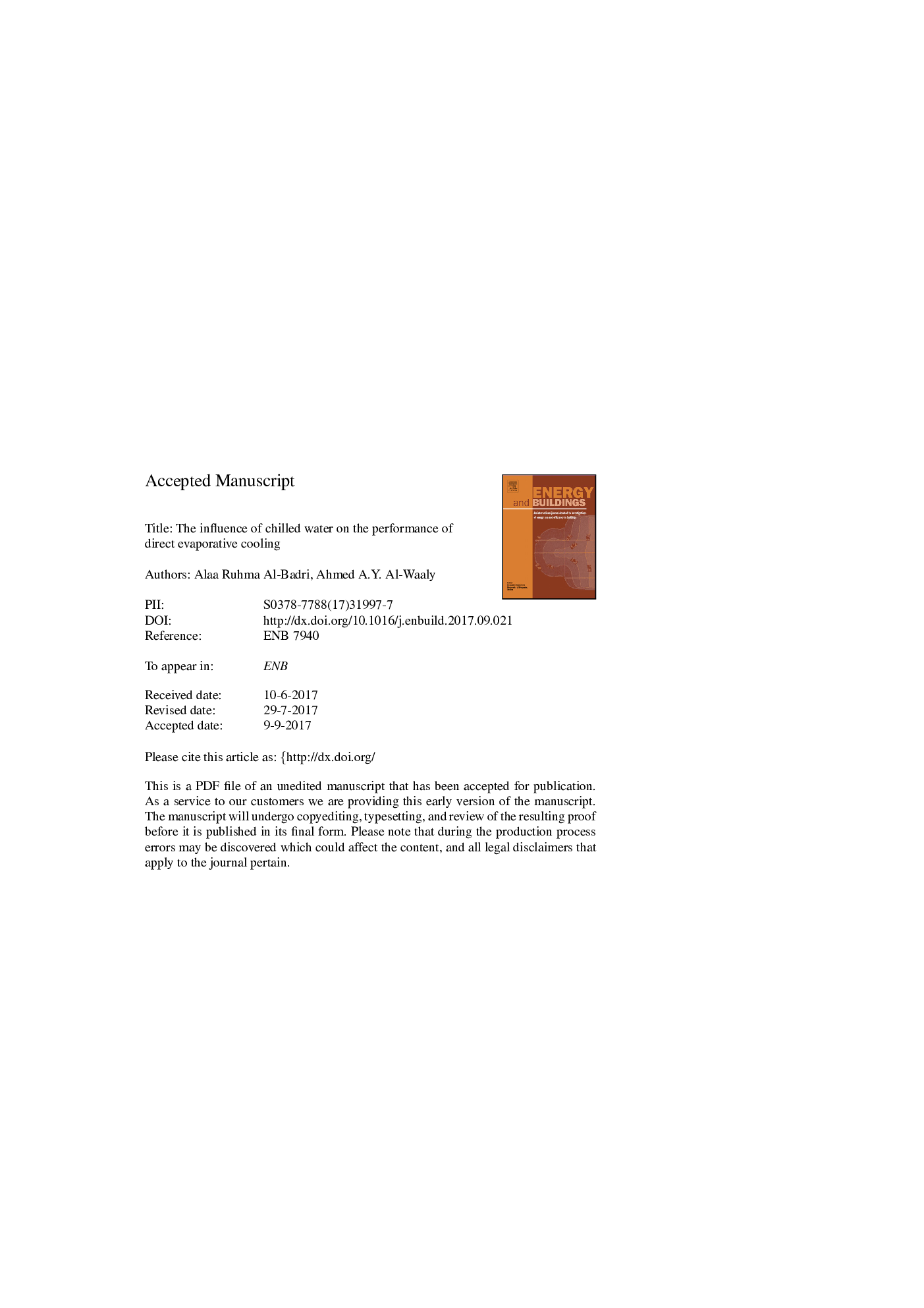| Article ID | Journal | Published Year | Pages | File Type |
|---|---|---|---|---|
| 4918848 | Energy and Buildings | 2017 | 24 Pages |
Abstract
In this paper, the performance of direct evaporative air cooling (DEC) was investigated with chilled water. This may increase the performance of DEC, especially in humid weather, as the air wet-bulb temperature reduces during the cooling process. The efficiency of DEC was determined by a performance factor instead of the saturation efficiency. A prediction model based on heat and mass balance between air and water was developed. For this model, the condition line of cooling process was divided into segments for which the enthalpy of air was gradually decreased. The influence of dry-bulb temperature of entering air, relative humidity, water subcooling and air-water mass flow rate ratio on the performance factor was taken into account. Experiments were performed for the verification of the predicted data. It could be shown that the mass flow rate ratio is the most effective parameter on the performance of DEC. The performance of DEC can be significantly increased by chilling water and by decreasing the mass flow rate ratio even when the air humidity is relatively high. This may enable the potential application of DEC in very humid weather areas. The mean absolute percentage deviation between experimental and predicted performance factor was 15.1%.
Keywords
Related Topics
Physical Sciences and Engineering
Energy
Renewable Energy, Sustainability and the Environment
Authors
Alaa Ruhma Al-Badri, Ahmed A.Y. Al-Waaly,
